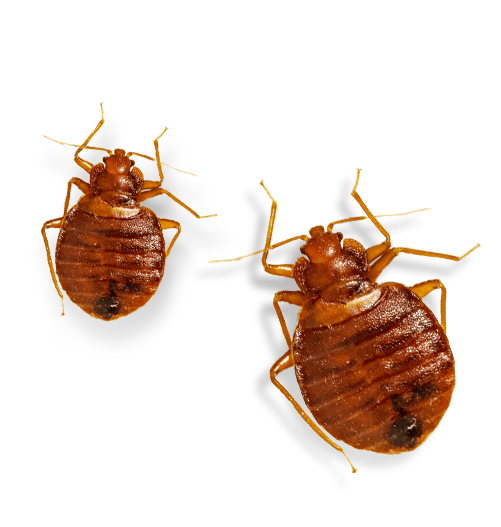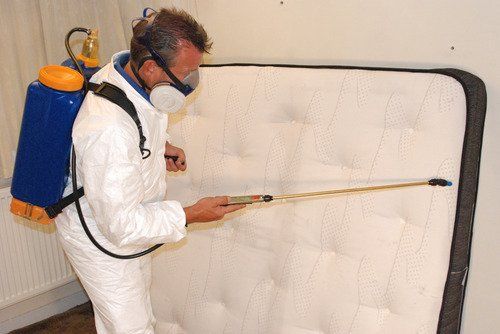Kings Cincinnati Bug Control Companies: Reliable Services
Wiki Article
Sorts Of Pest Control: Which Technique Is Right for Your Infestation?
When faced with a bug problem, the option of a suitable approach for parasite control is essential in efficiently taking care of the scenario. By discovering the various types of bug control approaches readily available, people can make informed decisions tailored to their one-of-a-kind circumstances, ensuring a more efficient and sustainable end result in insect eradication.Chemical Insect Control
Chemical parasite control involves making use of synthetic or naturally derived chemicals to take care of and get rid of pest populaces properly. This technique is commonly utilized in agriculture, forestry, and residential setups to battle a wide variety of bugs, including weeds, rats, and bugs. Making use of chemical pesticides can give quick and targeted services to pest infestations, making it a popular selection for numerous people and services.One of the vital benefits of chemical insect control is its ability to promptly get rid of insects, reducing the threat of damages to crops, residential property, and human health. By using details chemicals that target specific pests, this approach can efficiently regulate problems while reducing harm to useful organisms and the setting when used properly.
Nevertheless, the use of chemical parasite control likewise raises concerns concerning potential damaging impacts on non-target species, water sources, and human health. It is crucial to comply with security standards, apply chemicals sensibly, and think about alternate insect control methods to decrease these risks and make certain sustainable parasite administration methods.
Organic Insect Control
Organic pest control, likewise referred to as biocontrol, uses living microorganisms to manage and minimize pest populations naturally. This technique uses the power of nature to control insects without the requirement for artificial chemicals. Biocontrol can entail the introduction of natural adversaries of the bug varieties, such as killers, bloodsuckers, or pathogens, to suppress pest populations. By using the insect's natural predators or virus, organic parasite control supplies a eco-friendly and lasting solution to pest management.
Mechanical Bug Control
Utilizing hands-on and physical approaches to manage insect populations, mechanical bug control offers a different method that does not count on using living microorganisms or synthetic chemicals. This method involves the use of barriers, catches, or various other tools to literally deter or eliminate insects. By blocking bug access factors or establishing catches to capture them, mechanical parasite control can effectively reduce infestations without introducing chemicals into the environment.One common example of mechanical pest control is using mesh screens on doors and home windows to stop insects from entering structures. This simple yet reliable approach works as a physical obstacle, maintaining bugs out while enabling appropriate ventilation. Additionally, devices like mousetraps, fly swatters, and ultrasonic repellents drop under the mechanical parasite control group.
While mechanical go now parasite control approaches can be labor-intensive and call for normal surveillance and maintenance, they provide a lasting and environmentally friendly service for handling bug invasions. By integrating different mechanical techniques, homeowner can create a comprehensive parasite control method that reduces reliance on chemical pesticides.
Physical Parasite Control

Some typical physical parasite control methods include the use of obstacles such as displays or webs to stop bug entrance, catches to record and get rid of pests, and hand-picking to physically remove pests from plants or structures. Additionally, methods like warm treatments can be utilized to manage bugs like bed insects by increasing the temperature to levels that are deadly to the insects.
Physical insect control is especially helpful in incorporated parasite monitoring (IPM) strategies, where numerous parasite control approaches are incorporated for reliable bug administration while lessening using chemicals. By using physical insect control techniques, individuals can efficiently deal with pest problems with marginal ecological impact.
Integrated Pest Monitoring
When applying physical bug control techniques as part of parasite monitoring methods, Integrated Insect Management (IPM) arises as a detailed method that leverages various strategies to successfully manage pest populations. IPM concentrates on long-lasting prevention of parasites via a combination of organic, social, physical, and chemical tools customized to particular pest concerns. By integrating numerous control techniques, IPM aims to decrease the dangers related to parasites while likewise lowering reliance on chemical solutions.One trick aspect of IPM is the focus on tracking and assessing pest populaces to determine one of the most appropriate control approaches. This proactive strategy allows for very early intervention and targeted methods, leading to extra effective parasite management. Furthermore, IPM advertises eco-friendly practices by focusing on non-chemical control methods and only utilizing chemicals as a last resort.
Conclusion

By making use of the insect's all-natural predators or pathogens, organic insect control supplies a lasting and ecologically friendly option to pest administration. - Kings pest control Cincinnati
Making use of hand-operated and physical techniques to take care of pest populations, mechanical parasite control provides a different method that does not count on the usage of living organisms or artificial chemicals.A reliable method to taking care of pest populations without depending on chemical or organic methods involves the use of physical parasite control techniques.When carrying out physical pest control methods as part of parasite management methods, Integrated Parasite Management (IPM) emerges as a detailed strategy that leverages different methods to properly regulate pest populations. Chemical insect control includes the use of pesticides, biological insect control uses all-natural killers, mechanical bug control entails physical obstacles, physical click this pest control includes trapping or removing insects, and incorporated bug administration incorporates numerous approaches for an all natural approach to pest control.
Report this wiki page